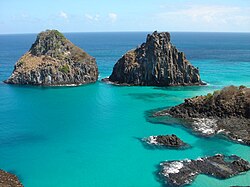This article has multiple issues. Please help improve it or discuss these issues on the talk page . (Learn how and when to remove these messages)
|

The surf zone or breaker zone is the nearshore part of a body of open water between the line at which the waves break and the shore. As ocean surface waves approach a shore, they interact with the bottom, get taller and steeper, and break, forming the foamy surface called surf. The region of breaking waves defines the surf zone. After breaking in the surf zone, the waves (now reduced in height) continue to move in, and they run up onto the sloping front of the beach, forming an uprush of water called swash. The water then runs back again as backwash. The water in the surf zone is relatively shallow, depending on the height and period of the waves.




